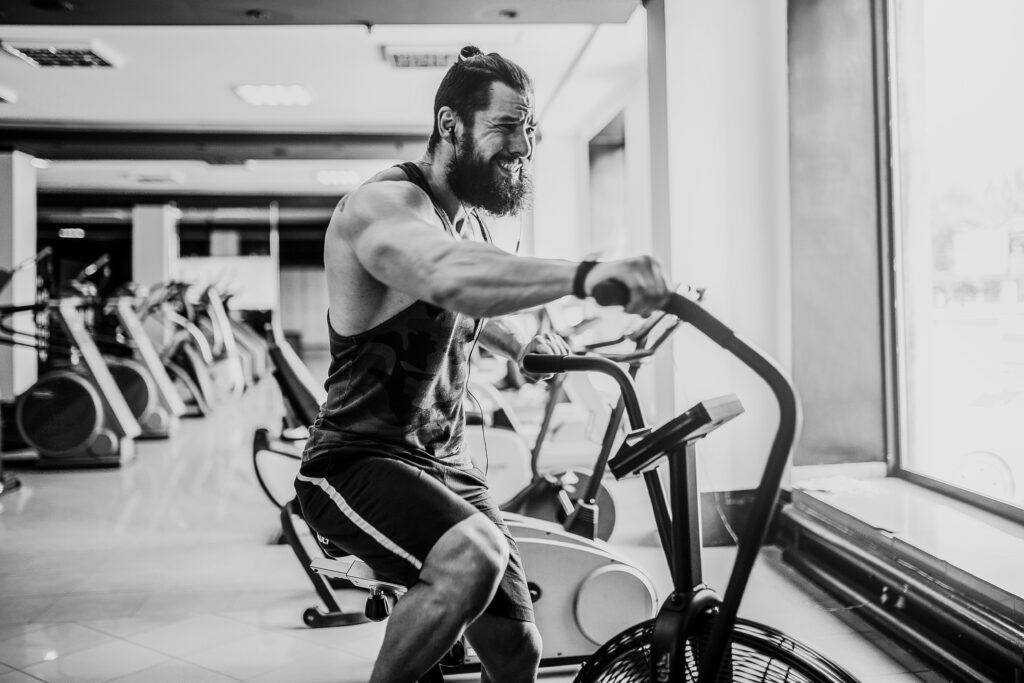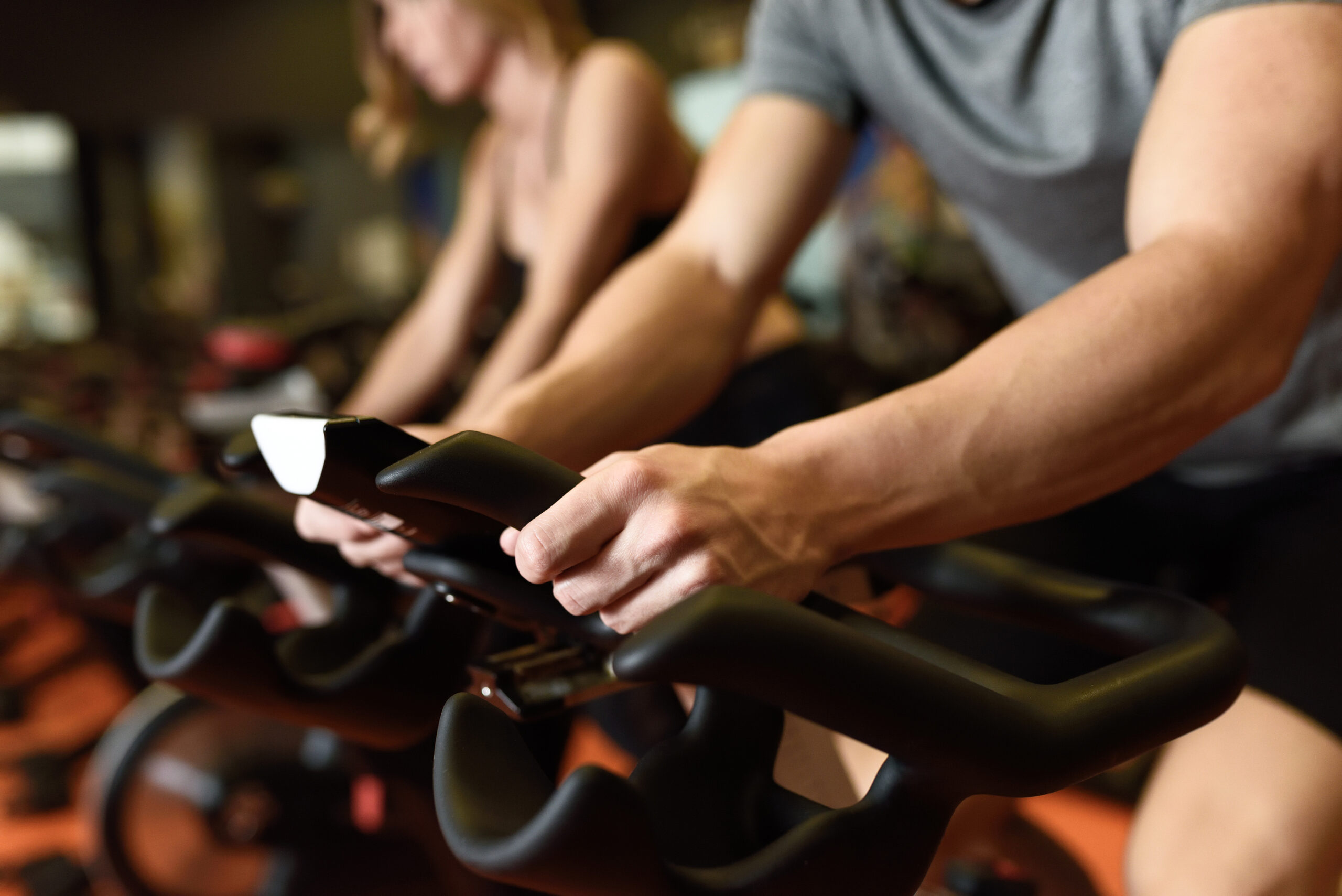Using an exercise bike can be a great way to lose weight, especially when paired with a healthy diet and an active lifestyle, but the hard truth is that losing weight is hard for most of us.
Counting calories… watching what you eat… making sure you get enough exercise… this isn’t easy stuff.
And if we don’t see results early, it can be even harder to stick with a weight loss routine.
And unfortunately, it only gets harder with getting older.
I’m not trying to depress anyone here, but given how challenging losing weight can be, I think it’s important to make the most of our efforts.
It’s challenging to find the time and motivation to get on that exercise bike, so we want to make sure we’re getting the most out of every workout.
And that’s exactly what my goal here is to do.
In this article, I’ll go over a few tips that can help you get the most from your exercise bike workouts and hopefully help you drop those pounds even faster.
But first, a quick word on losing weight in general…
Losing Weight
Losing “weight” can mean a few different things, but I think most of us are talking about losing “fat” when we say this – or at least I’m assuming most folks aren’t actively trying to lose muscle mass.
In order to drop body fat, we have to use that stored energy because that’s all fat is – stored calories we haven’t used yet.
This can be done by decreasing our food intake (dieting), by increasing our activity level (exercise), or by some combination of the two.
It’s all about using more calories than we consume.
This is a simple concept, but it can be remarkably difficult in the real world.
Consider that 1 lb of fat contains 3,500 stored calories – that means we have to burn 3,500 additional calories to drop our body weight by 1 lb.
This would mean a lot of exercise if we didn’t reduce our calorie intake, but it gets a lot more doable if we combine exercise with cutting calories.
The classic example is to reduce your daily caloric intake by 250 calories and then burn an additional 250 calories through exercise each day.
Theoretically, that should put you at a 500 calorie deficit per day, meaning that you should (again, theoretically), drop your weight by 1 lb per week.
You could lose weight faster with more drastic dieting and more intense exercise, but 1 lb/week is a very healthy rate.
Anyway, exercise bikes can be a great way to burn those calories because they’re pretty low impact and they fit easily in most home gyms.
The amount of calories we burn on an exercise bike will depend greatly on our size and how intensely we’re exercising.
Simply put, larger folks will burn more calories than smaller folks and biking with faster cadences and heavier resistances will obviously burn more calories too.
The average person will likely burn somewhere between 200 – 400 calories cycling for 30 minutes.
But before you start trying to lose weight with your exercise bike, check out these tips to make sure you’re making the most of your time.
Losing Weight With Your Exercise Bike
#1 Get Your Form Right First
I know this is a really boring tip, but it’s an important one – before you start ramping up your workout routine, please make sure you’re using your bike correctly.
This is probably most important when using an indoor cycle, but if your seat isn’t in the optimal position, you can hurt yourself using a recumbent or upright bike as well.
When pedaling any exercise bike, you need to make sure you have your seat adjusted properly because if you don’t, you’re setting yourself up for failure.
It doesn’t take long to hurt yourself and any pain or injuries will definitely make it harder to drop those pounds.
Regardless of what kind of exercise bike you’re using, your knees should never fully extend during the pedal stroke – there should still be 25 – 30° of flexion in your knee when your leg is in its most extended position.
And if you’re using an indoor cycle, make sure the handlebars are adjusted to a comfortable height and that your knees are always facing forward.
Try to pedal with a full stroke, meaning you’re using your hamstrings to pull the pedals as well as using your quads to push.
Doing so will help you work more muscles while you pedal, but it’ll also help prevent muscles from getting over used.
#2 Gradually Build Up
I know this can be hard when you’re all excited about losing weight and you just want dive head first into your exercise routine, but if you’re new to biking, do yourself a favor and take it slow.
Easy into it and you’ll be less likely to hurt yourself.
If you’re new to biking, start with 10 – 15 min workouts and see how everything feels.
If your joints are feeling fine, gradually increase the duration of your workouts until you can comfortably handle 30 – 45 min rides without any discomfort.
Gradually increasing the length of your workouts will also help you notice any errors in your form before they turn into painful mistakes.

#3 Use Intervals
Ok, now that we’re sure our form is correct and we’ve built up a tolerance to using our bike, it’s time to get serious – and there’s nothing more serious than intervals.
Well, more specifically, high intensity interval training (HIIT).
The intervals we’re talking about here are short bouts of really tough pedaling with the goal of getting our heart rate really elevated with each one.
There are tons of different HIIT workouts you can do on an exercise bike and you can use different combinations of resistance and cadence to make those intervals challenging.
But if you’re really trying to burn calories and lose weight with your bike, performing interval training is a must.
Research is rarely unanimous with its results, but I think the research regarding the benefits of HIIT is pretty darn close to being unanimous.
HIIT has been shown to be highly effective at burning calories, burning fat, improving cardiovascular function, improving strength, and even increasing out metabolism for hours after the exercise has stopped.
Here’s an example of how you can easily create your own HIIT workouts for your bike:
- Warm up with light pedaling x 3 min
- Increase resistance to moderate intensity and pedal x 2 min
- Rest x 1 min
- Increase resistance and complete 10 x 30 sec intervals with 30 sec rest in between
- Pedal against moderate intensity x 2 min
- Finish with 3 min cool down
The above example would only take 16 min and if you do those intervals correctly, you could get a solid workout in.
Increasing the duration of the intervals would be an easy way to bump up the overall duration.
Get creative with it, but it’s not a good idea to do HIIT workouts every day – these are taxing, so it’s better to only do them 2- 3x/wk.
#4 Use A Heart Rate Monitor
Using a heart rate monitor is a great way to make sure you’re working hard enough because your pulse doesn’t lie.
Our perceived rate of exertion can vary depending on our mood, but exercising based on what your heart rate is actually doing will keep ya honest.
Most exercise bikes come with those built-in grip monitors, but those things aren’t accurate.
Assuming your bike is compatible, you’re best bet is to get an arm band or chest strap monitor, but make sure you get one that’s compatible with your bike.
Or if you have in Apple Watch or Fitbit, you can probably use that as your heart rate monitor.
When doing high intensity intervals, you’ll probably want your heart rate somewhere in the 70-80% of your heart rate max zone.
For longer, more moderate workouts, keeping your heart rate more in the 50 – 70% heart rate max zone will likely get the job done.
FYI, our max heart rate decreases as we age and you can get a rough estimate of your max heart rate by subtracting your age (in years) from 220.
I’m 40, so my max heart rate would be around 180 bpm.
#5 Don’t Be Afraid To Add Some Resistance
In order to burn those calories and ultimately lose that weight, you’re gonna have to get uncomfortable – if it feels easy, you aren’t working hard enough.
I think a lot of us are stronger than we know, but it can be difficult to push ourselves out of our comfort zones.
Trust me, I know.
I’ve been using my Peloton for years now, but I still tend to hesitate pushing that resistance past what I’m used to doing, but the only way our bodies adapt and get stronger is if we continue to challenge ourselves.
So, if you’re really trying to lose weight, I encourage you to start bumping that resistance up during your workouts.
This can be during your intervals, while pedaling at higher cadences, or simply while climbing a hill during a typical workout.
But increasing the resistance you’re working against will increase the amount of calories you’re ultimately burning during your workout.
Increasing your cadence will also increase calorie expenditure, but I’ve found that my output (watt output) increases faster by increasing my resistance than my cadence.
Ultimately, combining higher resistances with faster cadences is the best of both worlds, but it’s ok to pedal slower against higher resistances too.
Final Thoughts
Losing weight is a journey and there are a lot of tools out there to help us along the way.
If you’re serious about losing weight, your best bet is going to be some combination of cutting calories and increasing the amount of exercise you’re getting.
And using an exercise bike can be a great way to get that exercise in.
The key to using a bike or any other fitness machine for that manner, is making sure you’re using it correctly and to make sure that you find it enjoyable.
It’s important to have a little fun while you exercise or you’ll likely find it harder to maintain for the long run.
Anyway, that’ll do it.
I hope you found this article helpful and if you have any other great tips you’d like to share, I’d love to hear ’em.
Just leave a comment below and I’ll get back to you shortly.




